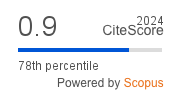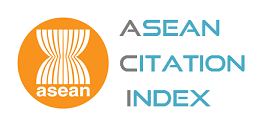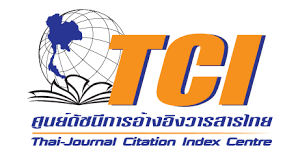Author Guidelines
1. Submission Policy
1.1 Upon submission, the author(s) must certify that the manuscript has not been previously published nor is in consideration for publication elsewhere. All legal duties and responsibilities of the research content belongs solely to the author(s).
1.2 All submissions will go through a double-blinded review, which means both the identities of authors and reviewers are unknown to one another throughout the entire review process. Authors must remove any content which may reveal the identity of the author(s).
1.3 The reviewers are nominated by the editorial team. The editors will send the manuscript to the reviewers to begin the review process.
1.4 Thammasat Review owns the copyrights and the rights to make digital and/or hard copy of, re-publish, and redistribute parts or the entire article.
1.5 Thammasat Review publishes bi-annually in June and December each year. The journal also welcomes Special Issues.
2. Submission Guideline
2.1 Manuscripts should be written in English and submitted through the Thammasat Review Online Submission System (https://sc01.tci-thaijo.org/index.php/tureview)
2.2 Manuscripts must be prepared using word-processing software (including Microsoft Word, OpenOffice, RTF, or WordPerfect) and should not exceed 10,000 words.
2.3 The title and abstract should appear on the first page of the manuscript. A concise abstract of no more than 250 words with a clearly stated argument is required. Authors should select no more than five keywords which should be placed under the abstract on the first page in the manuscript file.
2.4 Authors should not identify themselves (e.g. author's name and affiliation) in the manuscript.
Manuscripts must be submitted along with a cover letter which clearly states
a) the central research theme of the manuscript
b) the significance and originality of the research as well as
c) a confirmation that the manuscript has not been submitted or published elsewhere.
2.5 All figures and tables should be presented clearly in black and white only.
2.6 Footnotes should be placed on the pages following the text body and should be numbered consecutively.
2.7 It is imperative that the submitted manuscript is original and has not been published or is under consideration for any academic proceedings, books, journal or elsewhere at the time of submission at Thammasat Review.
2.8 Academic plagiarism is prohibited. In case the author(s) have used the work and/or words of others, respective sources should be appropriately cited or quoted.
2.9 In case of the manuscript is related to animals, volunteers or human participants, data collection operations must obtain consent or permission from all participants. The author(s) should make sure the data collection is in compliance with relevant laws and international ethical standards.
2.10 Author(s) must consent to transferring the copyright to the journal before publication. In addition, the published paper must not be re-produced elsewhere after being published by the journal with the editors’ consent.
3. Manuscript Preparation Guide
3.1 Manuscript Template
Authors can download manuscript template from the following link. CLICK HERE (Word)
Authors can download submission preparation checklist CLICK HERE>CLICK HERE (Word)
3.2 Text Format
The manuscript should be prepared using a text processing software such as Microsoft Word for Windows. B5 size paper is recommended. Page layout margins should be 2.54 cm on all four sides.
3.3 Manuscript Components
Title should be concise, specific, and informative. It should be located in the middle of the page
Abstract should be no longer than 250 words. It should provide a concise summary of the key points of the manuscript. Abstract must use Arial font size 9 point.
Keywords should be listed below the abstract. Five keywords should be provided. And keywords must start with a capital letter.
Manuscripts must be written in English and formatted according to these guidelines. Text should use Arial font, size 9, justified and single-spaced throughout. Please ensure that the text, tables and figures remain inside the margins. The manuscript should include research background, literature review, methodology, data analysis and how article contributes to the existing literature.
Original photographs and graphs should be clear with highest resolution and are appropriately inserted with an explanation.
Acknowledgments should be kept as brief as possible and given in a separate section prior to the references.
References should be numbered sequentially and these numbers should appear in brackets throughout the text. Referencing in manuscripts must follow the style of APA (American Psychological Association). Referencing guidelines can be found at https://apastyle.apa.org/. We recommend the author(s) use the referencing menu (Reference) in Microsoft Word for automatic formatting which can also be found at https://office.microsoft.com/th-th/word-help/HA010067492.aspx. Examples are as follow:
- Journal article:
Author, A. A. (Year published). Title of article. Title of Journal, Volume(Issue), pp-pp.
Author, A. A., Author, B. B. , & Author, C. C. (Year published). Title of article. Title of Journal, Volume(Issue), pp-pp. doi:xx.xxxxxxxxxx [OR] Retrieved from URL of publication's home page
- Book:
Author, A. A., & Author, B. B. (Year published). Book title (Edition). City, State: Publisher.
Editor, A. A., & Editor, B. B. (Eds.). (Year published). Title of book. City: Publisher.
Author, A. A. (Year published). Title of book (Edition). doi:xx.xxxxxxxxxx [OR] Retrieved from URL of publication's home page
- Thesis:
Author, A. A. (Year). Title of dissertation/thesis (Unpublished doctoral dissertation [OR] Unpublished master's thesis). Academic Institution, City, State [OR] Country.
Author, A. A. (Year). Title of dissertation/thesis (Doctoral dissertation/Master's thesis). Retrieved from https://url.com
- Electronic data source:
Author, A. A. (Date published). Title of webpage. The website name. https://www.url.com
4. Review Criteria
Thammasat Review uses the following criteria to review manuscripts: originality, abstract, conceptual significance, academic significance, research methodology, structure and coherence, expression, and theoretical validity.
- Originality: Does the research show clear difference between prior studies in terms of topic, theory, methodology, overall logic and/or implication?
- Abstract: Does the abstract summarize the major aspects of the manuscript. A good Abstract should include 1) the purpose of the study and the research problems, 2) the research design, 3) major findings or discovery trends as a result of the research analysis and 4) a brief summary of the research interpretations and conclusions.
- Conceptual Significant: Does the research represent an important contribution to knowledge and theory? Does the research lead to the discovery of new empirical phenomena, in-depth understanding of the phenomena, and/or challenge an existing theory?
- Academic Significance: Does the work contribute to the understanding of current problems or challenges faced by social science researchers?
- Research Methodology:How well are the arguments and supporting evidence presented? Are suitable scientific methods used?
- Structure, Language and Coherence: Are the flow of ideas in the research logical? Is the manuscript written with clarity?
- Expression: Does the research adopt a professional style and tone?
5. Cover Letter for Submission of Manuscript
We kindly ask that you provide a cover letter outlining the significance of your work, the research methods, and the contribution of the manuscript to the field.
Authors can download cover letter template from the following link. CLICK HERE >>> Cover Letter







